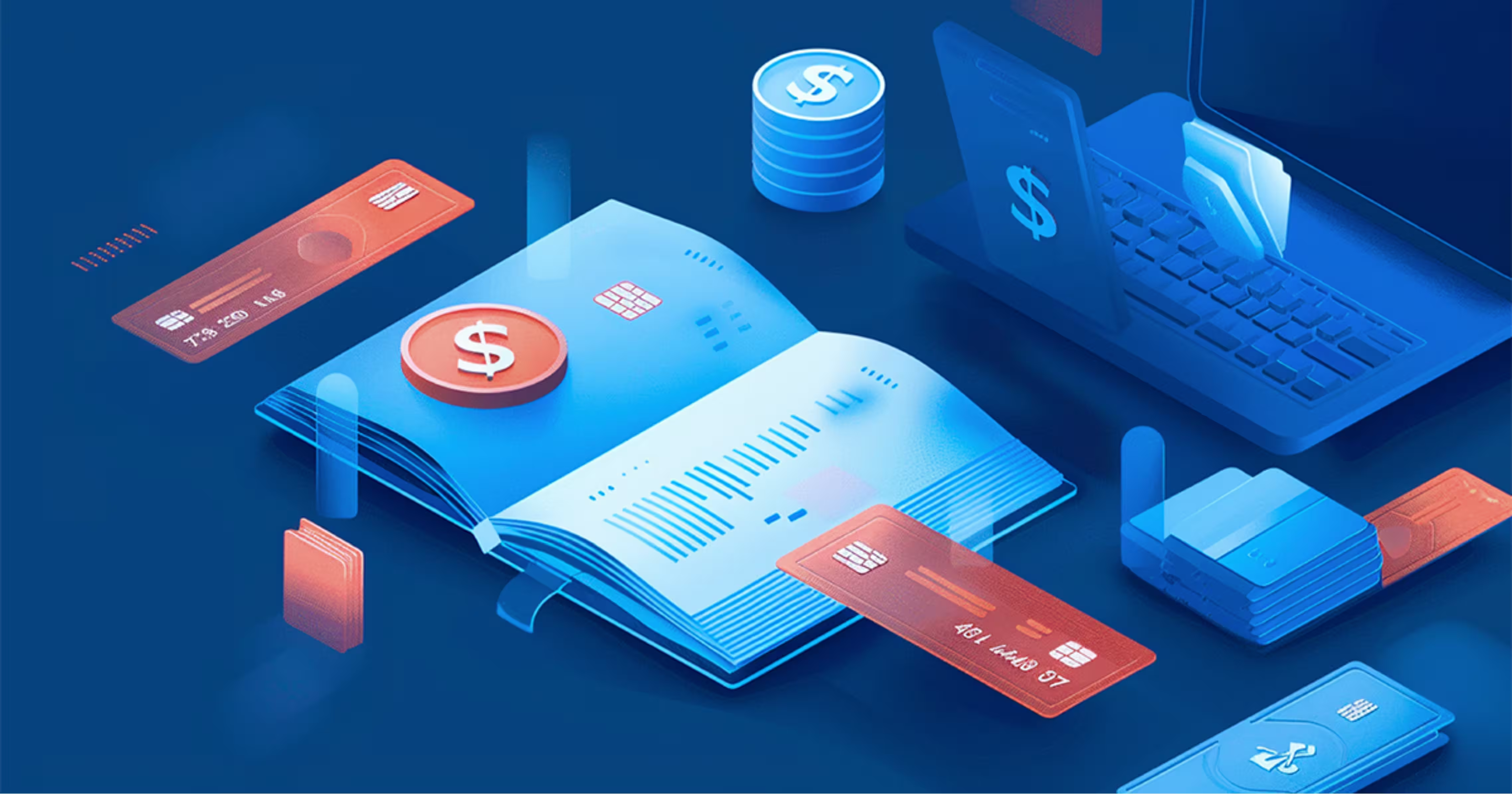10 Best SaaS Subscription Management Software for 2025

SaaS pricing is a complicated business. We’d even go so far as to say it’s more art than science. While data can be the foundation, it takes creativity (and strong narratives) to create a pricing strategy that balances both the value perceived by customers and your profit margins.
Whether it’s Pendo restructuring its entire pricing plan structure, Hubspot moving from a ‘flat-rate’ pricing model to a ‘per-user’ one, or Pipedrive removing a feature from one of its plans — SaaS companies are constantly experimenting with pricing.

While these pricing updates might seem simple at first glance, they come with a lot of work on the backend — such as grandfathering old customers, updating usage metrics, and prorating charges, to name a few.
Here’s where subscription management software comes into play — it can automate a lot of the processes mentioned above, making it easy for you to run your pricing experiments, without being bogged down by tedious, repetitive work.
The only caveat is that you must pick a subscription management solution that helps you automate your processes without restricting your experimentations.
What is SaaS subscription management software?
A SaaS subscription management software is a solution that enables SaaS companies to automate subscription workflows throughout a customer’s lifecycle — updating customer plans, setting subscription periods, handling prorations, and more.
Subscription management software comes with numerous benefits — from speeding up the payment cycle and reducing your Days Sales Outstanding (DSO) number to personalizing payment-related communications at scale.
What's the main difference between billing and subscription management for SaaS?
SaaS subscription management tools offer a comprehensive solution for managing the entire customer lifecycle, from signup to cancellation, including billing, while SaaS billing tools focus primarily on the billing aspects, like invoice generation and payment processing. Think of SaaS subscription management as the "big picture" and SaaS billing as one of its key components.
Here's a more detailed breakdown:
SaaS subscription management
- Broader scope: Manages the entire customer lifecycle, including onboarding, churn prevention, upgrades/downgrades, and cancellations.
- Features beyond billing: Includes CRM features, marketing data tracking, customer notifications, and account management.
- Example: A subscription management platform might allow you to offer free trials, flexible pricing, and manage customer plans with different tiers and features.
- Goal: To build a strong customer relationship, improve retention, and drive growth.
SaaS billing tools
- Specific focus: Handles recurring billing, invoice generation, payment processing, and other billing-related tasks.
- Essential for SaaS: Enables predictable cash flow and efficient revenue management.
- Features: Includes features for managing failed payments, dunning, and tax compliance.
- Goal: To streamline the billing process, minimize errors, and ensure accurate and timely payments.
How to choose the right subscription management software?
By checking these factors, you can ensure that the subscription management software you choose will meet both your current needs and future growth potential.
1. Customer experience
- Does the platform offer proactive support (dedicated customer success manager, high uptime, onboarding)?
- How responsive is their reactive support (omnichannel support, quick response times, bug fixes)?
- Use the American Customer Satisfaction Index (ASCI) scoring method to evaluate satisfaction.
2. User experience
- Is the platform easy to use for both you and your customers?
- Does it offer a smooth self-service portal and seamless subscription experience?
- How intuitive is the interface for managing subscriptions?
3. Security
- Does the software prioritize security, especially around sensitive customer data?
- Are fraud detection features in place?
- Is there encryption for sensitive data?
4. Scalability
- Can the platform handle increased volumes of customers and data over time?
- Does the software evolve with changing subscription trends?
Can it adapt as your business grows and your pricing models change?
5. Features and integrations
- Does the platform include necessary features like invoicing, contract management, and payment automation?
- Is it easy to integrate with your existing tech stack (CRM, accounting tools, etc.)?
- Does it offer flexibility with pricing models and workflows?
6. Customization
- How customizable is the platform to your specific needs?
- Can you easily tailor features like billing, invoicing, and reporting without jumping through hoops?
7. Support and customer success
- Does the software vendor provide ongoing support?
- Is there a dedicated customer success team to guide you through onboarding and usage?
8. Cost and pricing structure
- Does the pricing model align with your budget?
- Are there hidden costs or additional fees for certain features?
- Does it offer scalability in terms of cost as your business grows?
Top 10 SaaS subscription management software options
If you need some help finalizing your subscription management software, we’ve got you covered. This guide compares the top solutions to help you find the right fit.
To keep things simple, we’ve categorized them by approach:
- Usage-based tools: Zenskar, Maxio, and OneBill
- Traditional subscription tools: Stripe, Chargebee, Zuora, and Recurly
- Merchant-of-Record (MoR) services: Paddle, LemonSqueezy, and FastSprint
1. Zenskar
For those with flexible (and hybrid) subscription models
Zenskar is a purpose-built, all-in-one billing and subscription management platform. It supports both subscription and usage-based models, including but not limited to bundled, ramp deals, and more.

Here are some ways that Zenskar can automate your subscription management process:
- Draft contracts with custom billing periods, discounts, and payment options and speed up deal closures.
- Set custom dunning sequences to reduce failed payments and involuntary churn.
- Schedule payment reminders considering your customer’s location and timezone and increase open rates.
- Add custom payment links to invoices to speed up payment collection and reduce friction.
- Launch a self-serve portal so your customers can update their subscriptions, purchase credits, and download invoices.
All of this and more — without any engineering effort.
But what’s even better? Zenskar separates metering from billing. This ensures that usage data is not aggregated at source, as is the case with other platforms. Rather, you can send individual usage data to Zenskar.

Not only does this give you more flexibility when it comes to generating detailed invoices, but it also gives you the freedom to experiment with your pricing strategy.
Pricing
At Zenskar, we offer a value-based pricing model, considering factors like the number of invoices, customers, and collections. All plans include migration support, custom integrations, and unlimited support, a dedicated customer success representative.

2. Maxio
For those requiring one-click, usage-based pricing options

Maxio is a merger between Chargify (subscription management) and SaaSOptics (revenue analytics). Add to this combination, Maxio’s single-minded focus on usage-based pricing and you get a subscription management platform that ticks a lot of the basics.
Maxio has some great features to help you manage your subscription lifecycle — product catalogs, co-terming contracts, custom invoice templates, and dunning tools. Plus, its ‘templatized pricing configurations’, allow you to set up detailed, consumption-based subscription models with just a few clicks.
However — and this is a rather strange quirk — Maxio, while simplifying usage-based pricing, complicates simple subscription models like tiers and percentages.
Another disadvantage of Maxio is its customer support or the lack thereof. While one user mentioned having to wait a month to get their ticket closed, another has reportedly been waiting a year for a bug to be fixed.
Pricing
At $5000 a year, Maxio’s base plan is one of the most expensive ones on this list.
3. OneBill
For SaaS companies with a partner or affiliate program

OneBill is a decade-old, industry-agnostic monetization platform that comes with many FinOps solutions — one being subscription management. As OneBill supports both XaaS (anything as a service) and telecom, it comes with a robust usage-based pricing feature as well.
OneBill allows you to manage a customer’s subscription lifecycle end to end — from trial to cancellation. This includes invoicing, discounts, pausing subscriptions, customer portals, some lead management, and helpdesk features.
OneBill also has a good partner management platform. Your partners can add their services to customer packages and sell them, and you can automatically pay out their commissions.
However, while OneBill comes with a lot of features, it’s not very customizable. Even something as simple as correcting an invoice or customizing a report requires jumping through multiple hoops.
Some users on review sites have also raised concerns about the usability factor. One says that it was built by engineers for accountants and that it lacks nuance.
Pricing
OneBill has three pricing tiers — Lite, Flex, and Enterprise. However, they don’t share their pricing publicly. You can contact them directly to learn more about it.
4. Stripe
For those who are deep into the Stripe ecosystem

Stripe needs no introduction. With 20+ tools in its FinOps suite, it’s one of the largest payment solutions. This means you get everything you need — payments, subscription automation, entitlements, checkout forms, and more. The Stripe Marketplace makes it super easy to integrate with your tech stack.
However, just because you get everything from one company, doesn’t mean it is all in one platform. Billing, checkout, invoicing, and payments are all different tools in an integrated suite. Not only does this make for a slightly disjointed experience, but you would also have to pay separately for each tool.
Another drawback with Stripe is that it is not EU-friendly. You have to manually add the required fields to an invoice because Stripe does not auto-populate them.
Pricing
Stripe Payments (including checkout) start at 2.9% + 30¢ per successful charge for domestic cards. Other features like billing, tax, invoicing, and revenue recognition can be bought as add-ons.
Note: Zenskar is a competitor to the Stripe Billing product. We do not work with Stripe in any form, other than our integration with Stripe Payments, which is usually referred to as Stripe.
5. Chargebee
For those simple, recurring subscriptions.

Chargebee is a traditional subscription management platform that recently shifted its focus to revenue management after a series of acquisitions in Revenue Recognition, Receivables, and Retention.
Chargebee is a great option for SaaS companies with simple, straightforward subscription models. Key features include trial management, taxation, dunning, and self-service portals. Chargebee also integrates with most CRM and accounting tools.
However, Chargebee can be limiting for businesses with intricate pricing structures, like involving multiple, simultaneous subscriptions or usage-based billing. Some users said that they find discounts tricky to handle in Chargebee.
Pricing
There’s a free plan available and paid plans start at $599/mo. However, Chargebee’s subscription is not straightforward. Many features are under a paywall and you’ll have to pay an additional fee to access them. A user says — you’ll only find out the actual cost after using the platform.
Related reading: Zenskar vs. Chargebee
6. Zuora
For those with high-volume transactions.

Zuora is an industry-agnostic subscription management platform. While it supports SaaS subscription management, it is not as specialized as some of the other platforms on this list.
If you are an enterprise with high transaction levels or if you experiment with your pricing strategy often, Zuora is a good choice for you. More so, if you have the engineering bandwidth to customize it to suit your needs.
This includes everything from simple customizations like bulk edits to advanced capabilities like loading usage data into Zuora. However, it does provide low-code SDKs and APIs to integrate with your existing app ecosystems, making the job easier for your DevOps team.
Pricing
Contact Zuora directly for pricing details.
7. Recurly
For B2C SaaS companies that use frequent discounts or promotional offers.

Recurly is another solution that comes with full-stack subscription lifecycle management. It comes with a self-serve customer portal (with upgrade/downgrade workflows), payment communications, and account hierarchies — making it easy to club accounts by the same parent country.
Recurly also supports gift card and coupon management— two features that can be great for B2C SaaS companies. Recurly supports usage-based pricing as well. However, it comes with some quirks.
For example, you can only add usage-based pricing as an add-on. So you’ll need to create a plan, add the fee as $0, and then add UBP as an add-on. Same with updating subscriptions as well. You’ll have to delete the subscription, make changes, and then add it back.
Pricing
For first-time customers, Recurly offers a free plan with no payment processing fees on the first €35,000 processed each month. However, this doesn’t include Revenue Recognition. They also offer two other plans — Professional and Elite. You can contact Recurly directly for more details.
8. Paddle
For those with simple subscription models and global expansion plans.

Paddle is a Merchant-on-Record (MoR) service that can be a great option for early-stage SaaS companies aiming for global growth. It provides both payments and billing services for SaaS businesses and comes with global payment support and tax compliance, checkout flows, subscription management, and fraud protection.
However, managing usage-based subscriptions with Paddle can be slightly complicated. While they provide an out-of-the-box integration with m3ter, additional engineering effort is required for data aggregation and syncing.
More recently, there have also been conversations about delinquent churn on Paddle, with one user — NordQR — reporting almost 45% of their users had an issue renewing their subscription.
Also, Paddle payouts can happen anytime between the 2nd and 15th of a month, which can lead to some financial unpredictability.

Pricing
Paddle charges a flat rate of 5%+50¢ per checkout transaction. While this might seem like almost double the charge you pay Stripe (2.9% + 30¢ per transaction), it includes both payments and billing, unlike the latter.
9. LemonSqueezy
For those looking for subscription management with integrated marketing capabilities.

LemonSqueezy is another ‘done-for-you’ Merchant-of-Record service with an all-in-one payments platform — with features like payment and tax automation, subscription management, and prorated payments, to name a few.
LemonSqueezy also supports usage-based almost out-of-the-box. Their platform offers two primary methods for integrating your metering tool and transmitting usage data — Usage Records APIs and webhooks. While this might not be as convenient as the UBP-focused subscription management tools, it’s just as good as the traditional ones.
What makes LemonSqueezy unique is that it also helps you ‘sell better’ with its built-in affiliate tracking, lead magnet, and email marketing features.
However, LemonSqueezy is a relatively new player and as such, it’s not as refined as some of the other MoRs. Plus, it comes with a lot of hidden charges and according to one Redditor, this can reach almost 15% of your revenue.

Pricing
You can contact Lemonsqueezy directly for pricing. A point to note — Lemonsqueezy charges both a commission on transactions and a fixed fee during payout.
10. FastSpring
For those looking for a localized checkout experience.

Rounding out our list of top subscription management options is FastSprings, another Merchant-on-Record (MoR) service. Originally built for e-commerce businesses, it now supports SaaS subscription models like tiered and usage-based pricing as well.
FastSpring automates everything from recurring payments and trial management to payment-related correspondence. However, where it shines is its checkout experience. This includes options to customize currency, language, and tax settings depending on your customer’s location.
However, FastSpring’s UI and some of its features like reporting are more aligned with e-commerce businesses than SaaS businesses, which can leave you with an unrelatable user experience. FastSpring is also known to charge hidden fees — one example of this is an extra payment for risk screening processes.
Pricing
According to their website, they don’t seem to have a fixed pricing model. Here’s what they say: “Pricing is typically based on volume of sales and custom rates can be negotiated in conversation with our Sales team.”
How to choose the right subscription management software?
When deciding on a subscription management solution for your SaaS business, a lot depends on your pricing model and overall approach to subscription management (tool or Merchant-of-Record).
Once you decide on your approach, you can check off the fundamentals like features (invoices, account receivables, contract management, and payment automation) and integrations.
With most subscription management platforms offering very similar features, it’s these nuances that can make or break your experience. Here are some things to consider, before taking that final plunge.
1. Customer experience
Now that you’ve covered the basics — the next non-negotiable is the overall customer experience.
How far will your platform vendor go to set you up for success? This includes both proactive (a dedicated customer success manager, high uptime, onboarding support) and reactive (omnichannel support, quick response times, bug fixes).
One way to do this is by applying the American Customer Satisfaction Index (ASCI) scoring methodology for potential vendors. Score them from 1–10 on three factors — satisfaction with the services, whether the features match your requirements, and how they compare to competitors. Then use this formula to calculate your final score: (satisfaction with service + feature requirements + performance against competitors – 3)/27*100.
This can give you an objective method to gauge and rank each company.
2. User experience
Equally important is UX — for both you and your customers. How many times have you come across a product with a great UX, but bad subscription experience? The reason — their self-service portal (provided by the subscription management tool) had a middling UI.

Besides, a smooth subscription experience not only minimizes disruptions at checkout but can also build trust between you and your customers.
3. Security
According to the 2023 Thales Cloud Security Study which surveyed nearly 3000 IT professionals, 39% of the companies experienced a data breach in the last year. Even more concerning is the fact that only 45% of sensitive data is encrypted.
With pretty much all subscription data being sensitive, it’s important to prioritize software that’s both secure and includes fraud detection capabilities.
4. Scalability
Finally, there’s the scalability factor. Just because a tool works for you now doesn’t mean it’ll work for you five years down the line (or even two).
It’s not just the software being able to handle hundreds of customers or process high levels of data — it’s also the ability to innovate and keep up with the latest subscription trends and technologies.

Here’s some great advice we came across that — though geared towards SaaS founders — can be a great starting point for your ‘scalability’ questions:
Simplify subscription management with Zenskar
Market dynamics and competitor strategies mean you’ll have to constantly iterate your pricing to remain relevant. However, this can get difficult if you’re also updating your customer plans, contracts, and billing systems.
This is where Zenskar’s recurring subscription billing software can help. Features like flexible subscription models, invoice generation, payment communication templates, custom dunning sequences, and more can automate your busy work — so you have the bandwidth to do the work that actually moves the needle.
Moreover, unlike other subscription management tools, with Zenskar, you can manage your subscriptions from beginning to end without any engineering support. Plus, our customer service team is available 24/7 and replies within minutes — even if you’re just testing the waters in our sandbox.
Interested in giving Zenskar a try? Book a demo and we’ll show you how Zenskar can help you streamline your subscription management.
Frequently asked questions
Here’s how subscription management software can help SaaS companies:
- Save time by automating tasks like recurring payments, reminders, and contract management
- Reduce involuntary churn through customized dunning sequences like payment retries and reminders
- Understand your business’s financial health better with revenue reports like cash flow projections, DSO, and aging reports
- Give customers a self-service portal to modify subscriptions, download invoices, and more
Put simply, a subscription is the ‘recurring fee’ that’s agreed upon between a company and a customer. In SaaS speak, it’s the pricing plan or tier a customer is on.
Billing, on the other hand, refers to the process of collecting your payment from a customer. This includes things like generating an invoice, collecting payments, and reconciling payments.
Depending on the number of customers and the complexity of their pricing models, SaaS companies manage subscriptions in one of the following ways:
- Manually using a combination of emails, documents, and spreadsheets
- Internal tools built and managed by the engineering team
- Subscription management software that automates the entire subscription lifecycle
Sometimes, SaaS companies might also use a combination of all three methods.
Subscription management software is an automated system that gives you the tools you need to automate your subscription lifecycle, from signup to cancellation.
Merchant-of-Record (MoR) is a third-party service that handles the financial aspects of your subscriptions on your behalf.



















%20be%20truly%20invisible_.webp)







